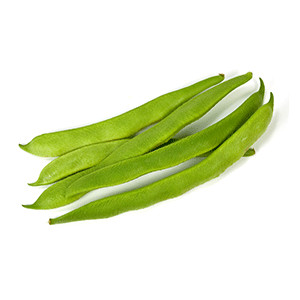Ahrtaler Köksje

Variety
Ahrtaler Köksje
Approved Data
created by steffen a. at 27.02.2021
Features
Color
weiß
rot
Season Overview
Sowing
Harvest
J
F
M
A
M
J
J
A
S
O
N
D
Description
The Ahrtaler Köksje belongs to the dried or grain bean varieties that have become rare in Germany. In contrast to most pole beans still cultivated, such varieties are not used as a green pod in soup, salad or as a preserved bean, but are used exclusively dried as a strong soup base. In the district of Ahrweiler as well as in the Cologne-Bonn area it is the only regionally proven dried bean. The Ahrtaler Köksje is said to be descended from the French Cocos de Prague beans, which were brought to the Rhine by the Napoleonic occupation troops. The Köksje plants grow along a beanstalk, but do not grow very tall. The pods ripen on the pole for a long time, sometimes until the first frosts at the end of October, which limits cultivation to the climate-favored wine-growing area of the Ahr Valley. Harvesting as a dry bean requires the longest possible post-ripening to allow the beans to dry sufficiently in the pod. The caramel-colored, brown-spotted bean seeds make a creamy, slightly sweet soup. They taste just as good processed into a spread or in a colorful salad. Dried beans are falling into oblivion in Germany, and most of the traditional varieties are disappearing from the variety lists and thus from the market. The köksje is grown only in private gardens in the region, mainly by older people. In addition, there has often been a mixing of the original stocks with other varieties. Therefore, only a few typical strands are still preserved, which should definitely be secured.
Non hybrid
Not frost resistant
Growing tips
6-10 beans spaced 8cm apart in a circle around a pole. Rod spacing 80x90 cm. Sowing depth 5 cm. The seeds germinate more quickly if they swell overnight.
Details
Light requirement
Sunny
Water requirement
Moist
Soil
Medium (loamy)
Nutrient requirement
Medium
Plant distance
10 cm
Row spacing
10 cm
Seeding depth
3 cm
Companion Plants
Asparagus
Beetroot
Black salsify
Borage
Broccoli
Brussels sprouts
Cabbage (Cabbage)
Cabbage (Savoy cabbage)
Caraway / Meridian fennel / Persian cumin
Cauliflower
Celery (Celeriac / Celery root)
Celery (Celery)
Chard
Collard greens (Kale)
Collard greens (Tuscan kale / Dinosaur kale / Palm tree kale)
Common marigold
Corn / Maize
Courgette / Zucchini
Cucumber / Gherkin
Dill
Kohlrabi / German turnip / Turnip cabbage
Lettuce (Endive / Escarole / Erisée)
Lettuce (Lamb's lettuce)
Lettuce (Lettuce)
Lettuce (Radicchio / Italian chicory)
Napa cabbage / Chinese cabbage
Nasturtium
Oregano
Pak Choi
Physalis
Potato
Pumpkin / Squash
Radish
Radishes
Rhubarb
Rutabaga / Swedish turnip
Sage
Savory
Spinach (Summer)
Sunflower
Tarragon
Turnip
Antagonistic Plants
Diseases
Grey mold
Pests
Aphids
Land snails